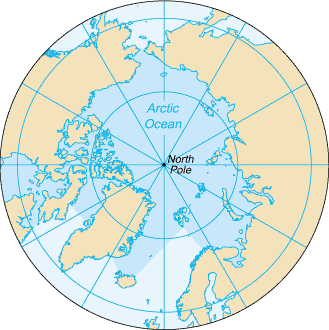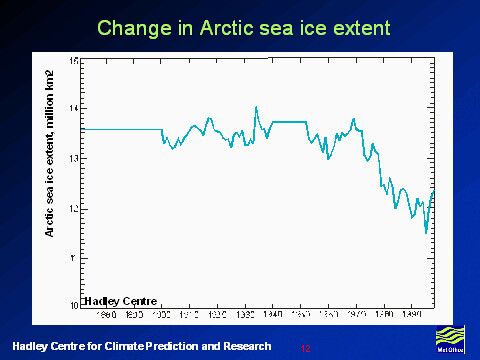I was just wondering that – Corals look like plants, and they don’t move around like a lot of animals. Is coral an animal or a plant?
Continue reading “Are Corals Plants Or Animals?”
Category: Natural world
No More ICE At North Pole
It seems unthinkable, but for the first time in human history, ice is on course to disappear entirely from the North Pole this year.

North Pole defined as the point in the northern hemisphere where the Earth’s axis of rotation meets the Earth’s surface. The north pole is often credited as having snow. But polar scientists reveal dramatic new evidence of climate change – no more ice at north pole.
The North Pole ice is melting at the highest rate and as a result, there will be no ice. In other words, the pole may be completely ice-free at the surface and composed of nothing but open water by September.
The disappearance of the Arctic sea ice, making it possible to reach the Pole sailing in a boat through open water, would be one of the most dramatic – and worrying – examples of the impact of global warming on the planet. Scientists say the ice at 90 degrees north may well have melted away by the summer.
If it happens, it raises the prospect of the Arctic nations being able to exploit the valuable oil and mineral deposits below these a bed which have until now been impossible to extract because of the thick sea ice above.
Swedish Spruce – The Oldest Known Living Tree
The oldest tree – a cluster of Norway Spruce found in April 2008 on a mountain top between Sweden and Norway, aged from 4500 up to 8000 years using carbon dating method.

Methuselah – a bristlecone pine in the White Mountains of California, was the oldest known living tree.
Now, scientists have found a cluster of spruce in the mountains in western Sweden which, at an age of 8,000 years, may be the world’s oldest living trees.
According to wikipedia:
Norway Spruce (Picea abies) is a species of spruce native to Europe.
It is a large evergreen coniferous tree growing to 35-55 m tall and with a trunk diameter of up to 1-1.5 m. The shoots are orange-brown and glabrous (hairless). The leaves are needle-like, 12-24 mm long, quadrangular in cross-section (not flattened), and dark green on all four sides with inconspicuous stomatal lines. The cones are 9-17 cm long (the longest of any spruce), and have bluntly to sharply triangular-pointed scale tips. They are green or reddish, maturing brown 5-7 months after pollination. The seeds are black, 4-5 mm long, with a pale brown 15 mm wing.
It grows throughout northeast Europe from Norway and Poland eastward, and also in the mountains of central Europe, southwest to the western end of the Alps, and southeast in the Carpathians and Balkans to the extreme north of Greece.
=> Swedish spruce may be world’s oldest living tree
Oldest Tree List
Oldest trees (“oldest” by region or species), listed by age.
- a cluster of Norway Spruce found in April 2008 on a mountain top between Sweden and Norway, aged from 4500 up to 8000 years (carbon dating).[1]
- Prometheus, cut down in 1964 aged ca. 4,900 years.
- Methuselah Great Basin Bristlecone Pine, California, United States, 4,800 years.
- Sarv-e-Abarkooh (also called “Zoroastrian Sarv”, , near Abarghood, Yazd, oldest Cypress (sarv) and oldest tree in Iran, aged ca. 4,000 years. (Encyclopedia Iranica, s.v. Cypress) [1][2]
- Fitzroya found in Chile, 3,600 years.
- Senator, Florida, United States, ca. 3,500 years.
- Patriarca da Floresta, oldest tree in Brazil, ca. 3,000 years.
- Sri Maha Bodhi, Sri Lanka, 2,300 years, oldest known human-planted tree.
- Fortingall Yew, Scotland, ca. 5.000-2,000 years, oldest tree in Europe.
- Bar olive tree in Montenegro, ca. 2,000 years.[3]
- The yew grove in Khosta, Sochi, Russia is known to possess several 2,000-year-old specimens.[4]
- Granit oak near Stara Zagora Bulgaria, ca. 1650 years.
- Saint-Mars-sur-la-Futaie, oldest tree in France, a hawthorn aged some 1,500 years.
- Seven Sisters Oak, Louisiana, United States, 1,500 years.
- Angel Oak, John’s Island, sc, United States, 1,400 years,
- Kongeegen, Denmark, 1,500-1,200 years, oldest oak tree in Northern Europe.
- Baikushev’s Pine, Bulgaria, ca. 1,300 years.
- Stelmužė oak, ca. 1,300 years, oldest tree in the Baltic states.
- Henryków Lubański, oldest tree in Poland, 1,260 years.
- Onzelievehereboom, oldest tree in Belgium, ca. 1,200 years.
- Ãrbol del Tule, estimated between 1,200-3,000 years, considered the oldest tree in Mexico.
- Schenklengsfeld linden, oldest tree in Germany, 1,120 years.
- Bowthorpe Oak, oldest oak tree in Britain, ca. 1,000 years.
- Tsurugaoka Hachiman Shrine ginkgo, ca. 1,000 years.
- Stoke Gabriel Churchyard Yew, ca. 1,000 years.
- Major Oak, England, ca. 800 years
- Umbra forest, Apulia, oldest beech, ca. 700 years.
- Queens Giant, ca. 450 years, oldest tree of New York metropolitan area.
- Tree of Life, Bahrain, 400 years, oldest tree of Bahrain.
Flowers Losing Smell Because Of Air Pollution
According to a new study – because of air pollution, the smell of flowers is not wafting as far as it once did. The finding could help explain why some pollinators, particularly bees, are declining in certain parts of the world.

In many plants, a flower is its most colorful part. Flowers are beloved for their various fragrances (scents). Many of us just don’t love flowers but enjoy seeing flowers growing in gardens. People also enjoy growing flowers in their backyards, outside their homes. People often wear flowers on their clothes or give flowers as a gift during special occasions, holidays, or rituals.
According to study – because of air pollution, the smell of flowers is not wafting as far as it once did. Pollution from our own power plants and automobiles destroy flowers’ aromas, the study suggests:
The finding could help explain why some pollinators, particularly bees, are declining in certain parts of the world.
Researchers at the University of Virginia created a mathematical model of how the scents of flowers travel with the wind. The scent molecules produced by the flowers readily bond with pollutants such as ozone, which destroys the aromas they produce.
Fish Can Count Numbers
Fish are not just cold-blooded aquatic vertebrates but little smart too. According to new research fish can count. Scientists have found that North American mosquito fish have the ability to count up to four. Fish have a limited ability to count how many other fish are nearby. This means that they have similar counting abilities to those observed in apes, monkeys and dolphins and humans with very limited mathematical ability.
Antarctica Volcanos Found
This is an interesting discovery which may lead to provide us more information about life and other factors.
The first evidence of a volcanic eruption from beneath Antarctica’s most rapidly changing ice sheet has been reported. The geography of Antarctica is dominated by its south polar location and, thus, by ice. The Antarctic continent, located in the Earth’s southern hemisphere, is centered asymmetrically around the South Pole and largely south of the Antarctic Circle.
Continue reading “Antarctica Volcanos Found”
How Thick Is The Ice At The North Pole
Interesting facts on the north pole – there is no land beneath the ice of the North Pole – only thick layer of ice.

I was just wondering about the thicknees of the ice at the north pole. The sea depth at the North Pole has been measured at 4,261 metres (13,980 ft). The nearest land is usually said to be Kaffeklubben Island, off the northern coast of Greenland about 440 miles (c. 700 km) away. The north pole is often credited as having snow but it is factually snowless.
The sea ice at the North Pole is typically around two or three meters thick, though there is considerable variation and occasionally the movement of floes exposes clear water. Studies have suggested that the average ice thickness has decreased in recent years due to global warming.
The Arctic ice cap is a shifting pack of sea ice some 6.5 to 10 feet i.e. 2 to 3 meters thick – floating above the 13,000-foot-deep (4,000-meter-deep) Arctic Ocean. During the winter the Arctic ice pack grows to the size of the United States. In the summer half of the ice disappears.
Insect Attack May Have Killed Dinosaurs
Insect are the most diverse group of animals on the Earth, with over a million described species— more than half of all known living organism. Insects may be found in nearly all environments on the planet, although only a small number of species occur in the oceans. Now there is a new theory that suggests that insect attack may have finished off dinosaurs. An important contributor to the demise of the dinosaurs, experts say, could have been the rise and evolution of insects, especially the slow-but-overwhelming threat posed by new disease carriers.

From the article:
Asteroid impacts or massive volcanic flows might have occurred around the time dinosaurs became extinct, but a new arguemet is that the mightiest creatures the world has ever known may have been brought down by a tiny, much less dramatic force — biting, disease-carrying insects.
No ice over the arctic by summer 2013
The Arctic Ocean, located in the northern hemisphere and mostly in the Arctic north polar region. Arctic summer melting in 2007 set new records. The polar ice pack is thinning, and there is a seasonal hole in ozone layer in many years. Reduction of the area of Arctic sea ice will have an effect on the planet’s albedo, thus possibly affecting global warming within a positive feedback mechanism
The most important areas of pack ice are the polar ice packs formed from seawater in the Earth’s polar regions: the Arctic ice pack of the Arctic Ocean and the Antarctic ice pack of the Southern Ocean. Scientists in the US have presented one of the most dramatic forecasts yet for the disappearance of Arctic sea ice. In the end, it will just melt away quite suddenly. It might not be as early as 2013 but it will be soon, much earlier than 2040.

From the BBC Story:
Their latest modelling studies indicate northern polar waters could be ice-free in summers within just 5-6 years.
Professor Wieslaw Maslowski told an American Geophysical Union meeting that previous projections had underestimated the processes now driving ice loss.
Summer melting this year reduced the ice cover to 4.13 million sq km, the smallest ever extent in modern times.
